Foam insulation comes with many advantages, including a high insulation R-value and relatively easy installation. But you are wondering, does foam insulation need a vapor barrier? In this post, we combine industry professional knowledge with up-to-date research to answer your question.
Foam insulation usually does not require a vapor barrier. For some foam insulation types, such as closed-cell spray foam and foam board insulation, the insulation itself stops the movement of most water vapor. On the other hand, the vapor permeability of open-cell foam insulation is an advantage because it allows the building and wall to breathe.
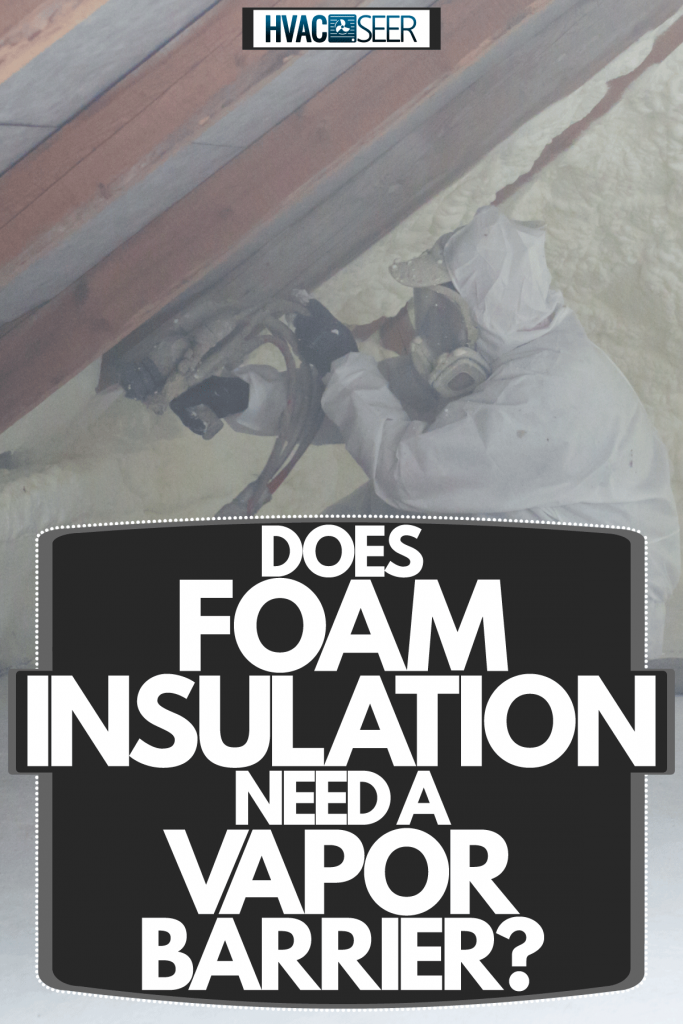
What is a vapor barrier?
According to the Building Science Corporation's article "Understanding Vapor Barriers," a vapor barrier is a layer of material impervious to water and water vapor. As such, most materials colloquially referred to as vapor barriers are actually vapor retarders. In contrast to vapor barriers, vapor retarders only hinder the movement of water or only let water vapor move in one direction.
A good example of this confusion is the paper backing commonly found on fiberglass and other batt insulation. This is regularly referred to as a vapor barrier. This label is erroneous as this material is only a vapor retarder since it allows moisture and water vapor to pass.
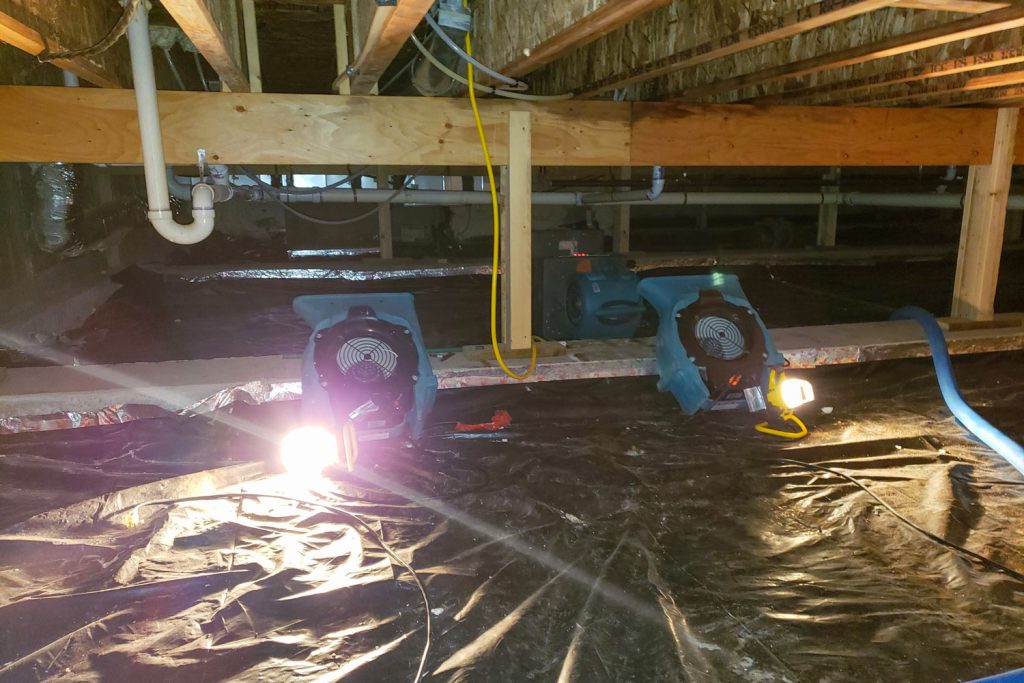
On the other hand, the black or clear tarp material regularly on the floor of the crawlspace is a vapor barrier. Water can collect and pool on this material; it is so resistant to leaking. Other examples of vapor barriers are materials such as metal and glass.
Vapor Barriers and Foam Insulation
There are three main types of foam insulation, closed-cell spray foam, open-cell spray foam, and pre-formed foam board. They all have different requirements and interactions in terms of vapor barriers. An introduction to each type of insulation is provided in this section.
Closed-Cell Spray Foam
This type of insulation forms solid bubbles of foam and so acts as a complete vapor barrier. That is to say, almost no water and air can pass through the insulation. This impermeability makes close cell spray foam inappropriate for most residential construction applications.
Click here for closed-cell spray foam from Amazon.
That being said, if you do have a location where you need a vapor barrier, close cell spray foam acts both as the insulation and the vapor barrier. This makes closed-cell spray foam an excellent option for below-ground applications and many industrial applications.
Open-Cell Spray Foam
Open-Cell spray foam makes a matric of insulation similar to a sponge. This means that air and water can move from one side of the insulation to the other, albeit slowly. For this reason, open-cell spray foam makes excellent insulation for residential construction.
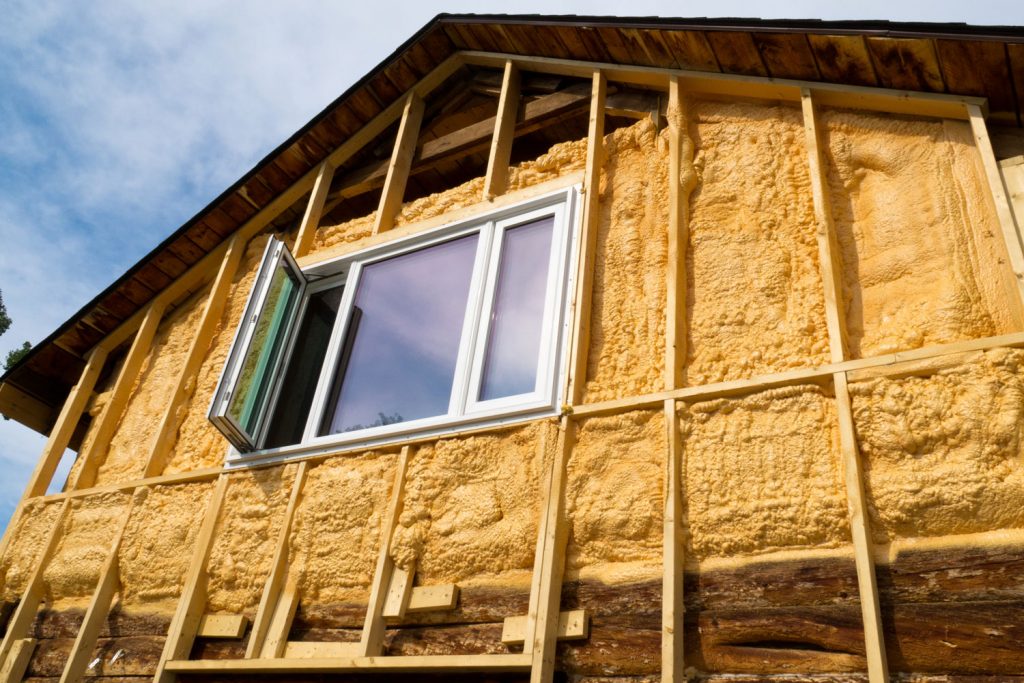
Is open-cell spray foam vapor-permeable?
Yes, open-cell foam is vapor-permeable. Water vapor and other gases will move through the insulation. This means that the danger of damaging condensation is much lower for open-cell spray foam as compared to closed-cell spray foam.
Do you need a vapor barrier with open-cell foam insulation?
For situations where vapor barriers are called for, you will need one with open-cell foam insulation. This means that for very cold and wet climates and below ground applications, a separate vapor barrier is advised with open-cell foam insulation. However, most insulation applications where open-cell spray foam is appropriate do not require a vapor barrier.
Foam Board Insulation
There are many different types of foam board with many different types of facing. These insulation types are water and air-permeable to various degrees. However, they are all less permeable than common insulation types such as fiberglass and cellulose.
Click here for foam board insulation from Amazon.
One common type of foam board insulation is known as expanded polystyrene. This type of insulation is more permeable than many other foam board types, making it more appropriate for most residential applications. However, when thick enough, even this insulation will stop most moisture movement.
Is rigid foam a moisture barrier?
Rigid foam board is quite impermeable and almost 100% so when faced with a foil layer. This means that rigid foam usually functions as a moisture barrier. However, if the layer of rigid foam is very thin, some moisture and vapor will pass through the insulation.
The Problem with Vapor Barriers
The issue with vapor barriers is that they do not allow moisture to escape at all. In residential construction, installing a vapor barrier on an exterior wall or ceiling means that the moisture from inside the house will collect on the impermeable layer.
Interior moisture is inevitable not only from the natural respiration of humans and pets but also from holes in home construction such as doorways, windows, and other air leaks. When the outside is cold, the moisture inside the home will condense on the vapor barrier.
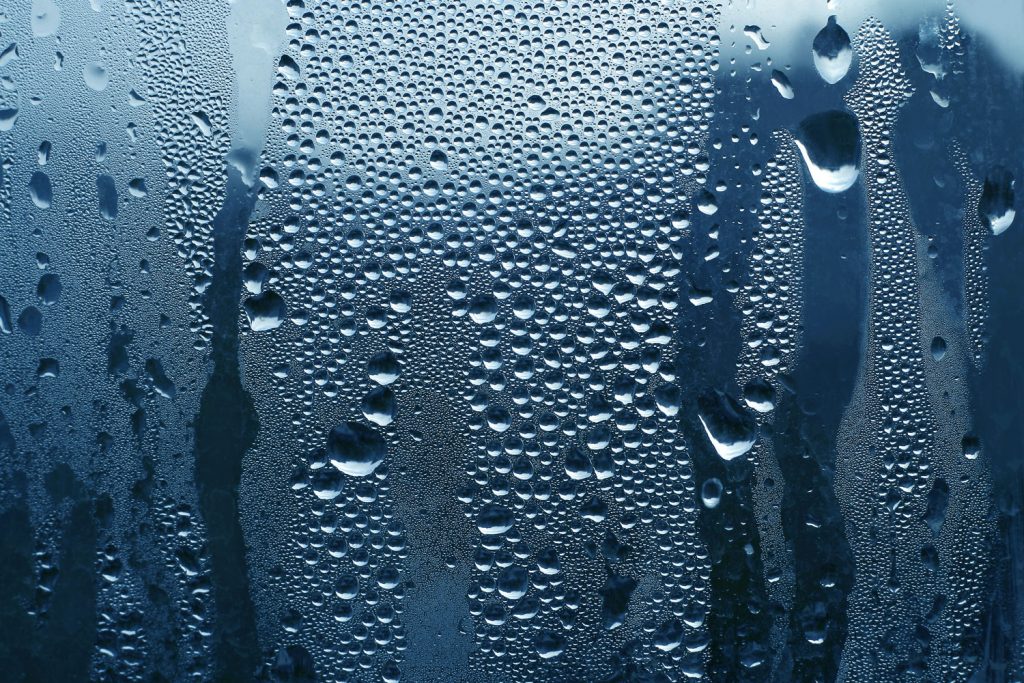
This happens because the warm wet inside air will cool when it hits the colder wall. This cooling causes water to fall out of the air creating water droplets. It is very common to see this on windows during the winter months. Now imagine your dripping windows but inside the walls of your home!
This condensed moisture will build up over time and create rot, mold, discoloration, and even issues with structural integrity. On the other hand, Vapor retarders will allow some moisture to escape the home, thus avoiding the issues with true vapor barriers.

Almost all homes have higher humidity than the outside, especially in the cold winter. For the reasons detailed in this section, vapor barriers are not recommended in most climates. This advice means that using certain types of foam insulation is usually inappropriate for residential construction.
When are Vapor Barriers Appropriate?
Vapor barriers are appropriate only when you genuinely want to halt the movement of moisture. A common example is provided above in the instance of vapor barriers on the floor of crawl spaces. The use of vapor barriers on concrete walls which are below grade is another example. Vapor barriers are also installed in the wall and ceiling construction for very cold and very wet climates.
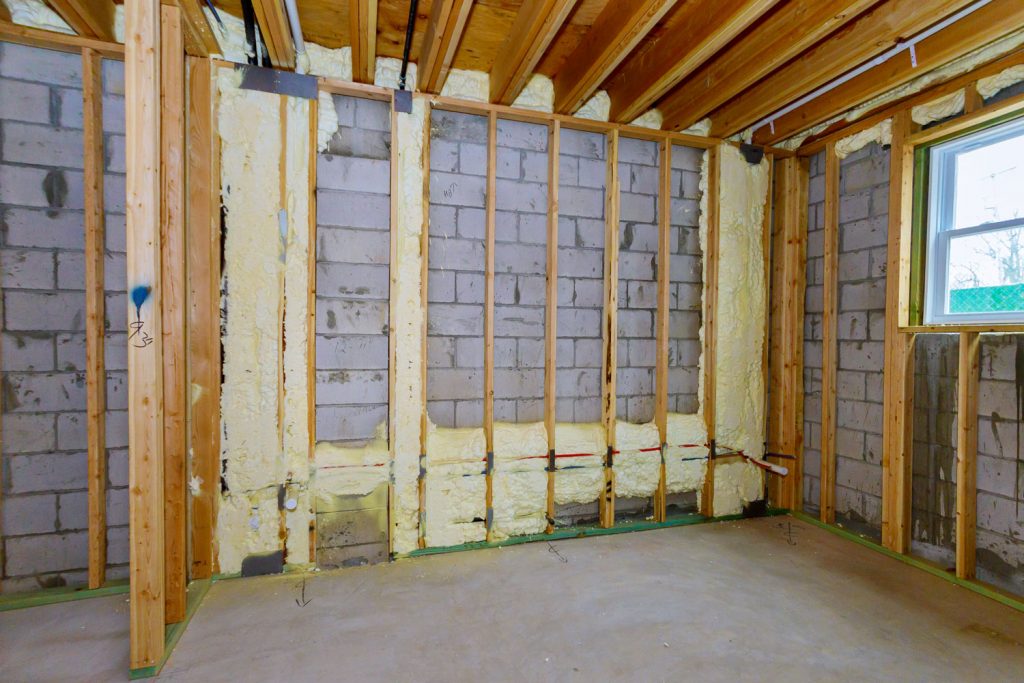
The vapor barriers serve to stop cold, moist air from seeping up and out from the ground for below-ground applications. This is useful because the earth around our homes almost always retains more water than the air of our houses. So without a vapor barrier, the earth would be a source of unwanted humidity for the home.
Finally, it is appropriate to place a vapor barrier on the inside of the insulation next to the wall cladding for very cold and very wet climates. This location places the impermeable layer at the location of the smallest temperature difference within the wall, thus reducing condensation. Further, this allows moisture that does reach the vapor barrier to escape later.
Be Careful with Vapor Barriers
Be very cautious with vapor barriers. Installing a vapor barrier where one does not belong can cause the many issues detailed above. If you are unsure whether a vapor barrier is appropriate, move towards leaving the vapor barrier out. This choice will ensure that your home or construction project can adequately shed extra moisture, critical for building longevity and home health.
In Closing
The interaction of insulation and vapor barriers is a complicated one that has undergone many changes through the years. To learn more, read these other great articles from HVAC Seer: 9 Types Of Thermal Insulation You Should Know, How Thick Should Foam Insulation Be In A Basement?, Does A Basement Ceiling Need Insulation?, and Can Attic Insulation Touch The Roof?
In this post, we answered the question of whether or not foam insulation needs a vapor barrier. We include definitions of vapor barriers, the pros and cons of vapor barriers, and a discussion regarding vapor barriers and all primary foam insulation types. Good luck!


